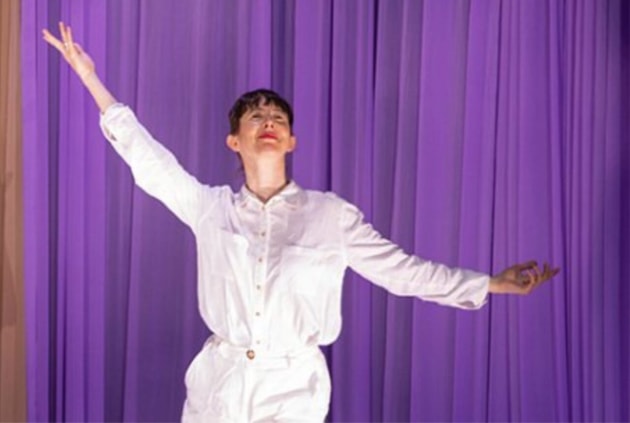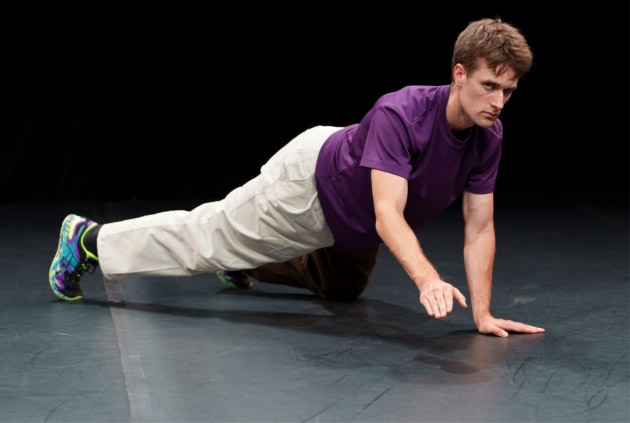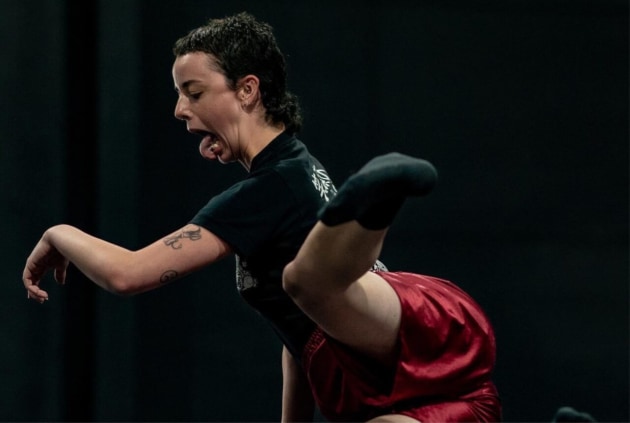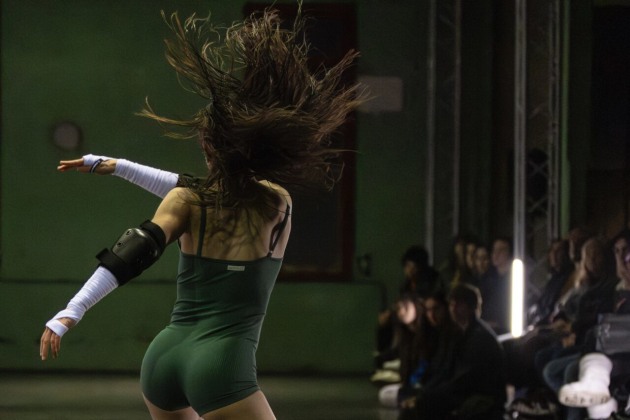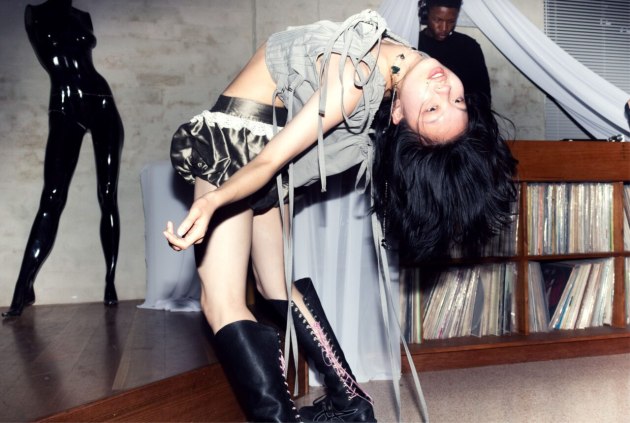Escalator 2025
Stephanie Lake Company
Magdalen Laundry and Industrial School
Abbotsford Convent
August 6
This is the second iteration of Escalator, a showcase for emerging choreographers auspiced by Stephanie Lake Company. Lake selects five dance makers, either freshly minted or exploring new territory, and gives them free reign to make as they please, culminating in an event that is more than a showing but without the expectations of a full-blown resolved work. Indeed, the works are short at 10 minutes each. It’s enough to tantalise and give a glimpse into the many possibilities that the material offers for further development.
The site chosen for the performances resonates with meaning and it’s only now that I reflect on what a great opportunity there is here to create site-specific work, but of course, choreographers have to make what is inside them first and respond to the space as they chose to or not. (The laundry has a dark past as an asylum for non-compliant girls and women. The domestic skills were supposed to put them back on the straight and narrow.) The space is cavernous and has a haunted feeling.
First into this space is Thomas Woodman with his piece cold slow shock. Audience flanks the space of the big hall and the dancer uses various vantage points. cold slow shock is a work for dancer and fluorescent orange electrical cord. It is at once pedestrian and completely nutty. Woodman creates pattens and movement with the ‘rope’ and provides a halting, episodic commentary, at first speaking into a walkie-talkie and then muttering to himself as to the transformation he is creating with his prop. It is an interesting start to the program and Woodman has made a clear choice to create physical theatre rather than to dance in any conventional way. Having seen him dance only weeks earlier in Jo Lloyd’s wonderful Agitato, I would have like to have seen some of his dance artistry in this piece.
Robert Alejandro Tinning is an Australian dance maker of Afro-Ecuadorian and Scottish background and currently a dancer with Stephanie Lake Company. He is interested in diaspora communities and identity and Sandunga forms part of this investigation. The piece begins with Tinning’s collaborator Louis Frere-Harvey rubbing his hands as if to make fire. This becomes a percussive sound that sets a rhythm which then becomes Tinning’s heartbeat. Sandunga is quite dense but its repeated motifs of percussive hands, beating heart, drum-beats and shifts between swift small running steps and expansive leaps and twists act as touchstones in this compressed work. It traverses many moods within a small timeframe. The traditional very full costume reminds in its swirl and flow of how heritage and identity are inescapable and follow everywhere.
Sandunga uses the same space configuration as Woodman’s work but we are then ushered into a smaller, even more desolate space for Marni Green’s Slipping into Filth. Performed by Mara Galagher and Avril Eatherley, this is a journey into unhinged territory. The artist statement is short and poetic:
I’m in the burrow with you.
I offer all of my skin for you. I receive fruit in return.
I go back to the burrow with you.
What we see is an almost comatose, slightly scary character, animalistically pealing and consuming small mandarins. Long tallons of fingernails work at the fruit, an improbably long mane of untamed hair all but obscures the form which appears genderless. Meanwhile a bathtub containing another long-maned figure sits upstage. A sheet of hair drapes over the end of the bath. Feminine arms and legs are seen luxuriating. Are they the same person? The work travels through moments of variegated grotesquery and is really quite compelling. This is Green’s first choreographic work and she is certainly not short on ideas and story-telling nous. She is also a current dancer for Stephanie Lake Company.
Long time maker Alice Dixon’s work The Folded Scene is a venture into solo choreography (she worked for many years with collaborators (Caroline Meaden and William McBride). For this we are back in the main space and this time seated in a more traditional formation, facing a single performing space. It is a work for three dancers; Dixon, Martin Hansen and Rachael Mackie. The movement language seems twitchy and earthbound, with feet almost fixed to the floor in the initial stages. The dancers move individually around the same intention. Necks are bent, toros twisted; there is a sense of agitation in the bodies. Gestures at times seem task based or pattern-driven. The work is well resolved for such a short piece and very coherent.
For a complete change of pace we are greeted by a very, very cheesy and condescending Carmen Yih in AUSSIEAUSSIEAUSSIE. She is welcoming us as new citizens of Australia and making us cringily aware of what an honour is being bestowed on us. Dressed as a kind of circus performer (for we are at a kind of circus) she resembles a lurid wattle. A monologue is well delivered and has the audience OIOIOing self-consciously, as I’m sure is the intention. Yih dances in parody alongside quite a strong video work which begins lightly sarcastic and becomes more violently critical of Australia’s colonial and recent past of racism and exclusion. Vision of royal coronations, white Australia policy slogans and racist dogma are looped into the video with its texture becoming less legible as the work progresses. Meanwhile Yih struggles to remain endlessly perky and positive in the face of all this reality. Being an Australian quickly threatens to break and consume her and she is finally beaten down. The relentlessly comedic tone of this work is exhausting and highly effective. There are so many elements here to untangle in a work that is ripe for further development.
It is great to experience so many new voices in choreography at a time when choreographic opportunities are dwindling.
- SUSAN BENDALL



